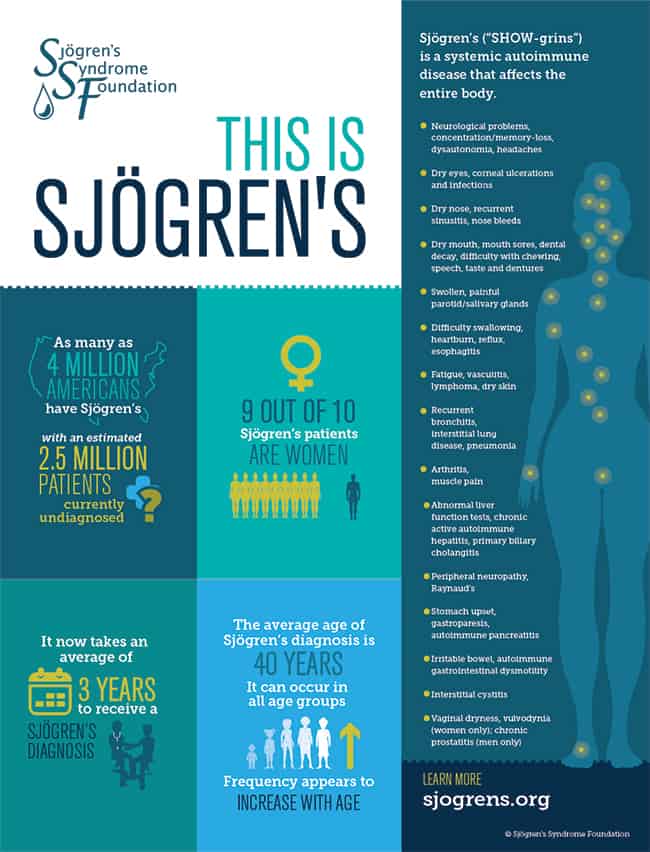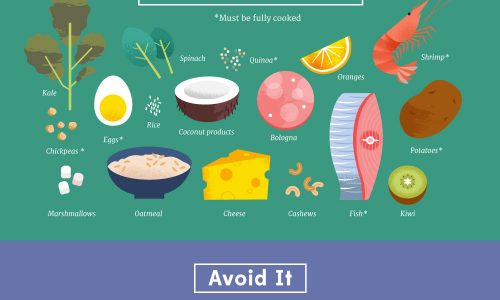
Although an estimated 4 million Americans are living with Sjögren’s (pronounced SHOW-grins) Syndrome, there are still many individuals—including patients, families, and healthcare professionals—who aren’t fully educated about the disease.
When my rheumatologist diagnosed me with it in 2017, I was certainly one of those individuals who, not only wasn’t educated about Sjögren’s Syndrome, but also one who had never heard of it. Since April is Sjögren’s Syndrome awareness month, many people are calling for more attention to be brought to the condition.
Sjögren’s Syndrome is a systemic autoimmune disease that affects the entire body. Sjögren’s can affect the moisture-making glands, resulting in difficulty swallowing, dental decay, dry mouth, dry eyes, corneal ulcerations, and more. Other symptoms include peripheral neuropathy, fatigue, neurological problems, concentration loss, arthritis and muscle pain, lung, and liver problems.
That’s just scratching the surface. There are approximately 2.5 million patients who don’t even know they have the condition. Unfortunately, that’s not a hard fact to believe, being that it takes an average of three years to receive a diagnosis. Although the average age of diagnosis is age 40, Sjögren’s can occur in all age groups. Tennis superstar, Venus Williams, revealed that she was living with Sjögren’s Syndrome in 2011. She has courageously found ways to cope with her symptoms to continue playing the sport she loves.
This infographic is from the Sjögren’s Syndrome Foundation. The organization aims to serve as the national advocate for Sjögren’s and helps patients with coping strategies. Although there isn’t currently a cure, more treatment options are becoming available. Until then, patients can benefit by working with their physicians and other specialists to learn to treat and possibly minimize their symptoms.





